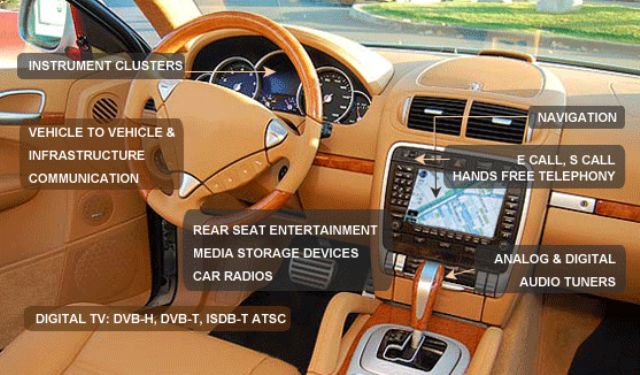Shipments of OE Embedded Telematics Systems to Hit 54.5 million in 2020: Berg Insight
2014/10/31 | By Quincy Liang
Global shipments of original equipment (OE) embedded telematics systems on passenger cars are forecasted to grow from 8.4 million units in 2013 at a compound annual growth rate (CAGR) of 30.6% to reach 54.5 million units in 2020, according to a new research report by Berg Insight.
Berg Insight also forecasts that the number of cars sold worldwide equipped with head-units featuring handset-based telematics capabilities will surge from 7.0 million in 2013 to 68.5 million in 2020.
While telematics is a broad term applied to a wide range of connected services in the automotive industry, Berg Insight more narrowly defines the field to include automatic systems designed for passenger cars that incorporate some form of cellular communication. Automotive manufacturers can choose between several connectivity options when creating connected-car services, which are not mutually exclusive. The main options today are embedded telematics devices, tethered handsets and integrated smartphones, the international research firm said.
Car manufacturers often use a combination of these options to support different customer needs and keep pace with the rapid development of mobile technology. Connected car services are gaining momentum globally after many years of development and gradual rollout. The drivers behind the adoption of telematics systems among car manufacturers are both commercial and regulatory.
Safety First
Safety regulations that aim to make automatic emergency calls with vehicle location mandatory in all new cars are for instance being adopted in the European Union (EU) and Russia with the eCall and ERA-GLONASS initiatives, respectively. In other markets such as North America and Japan, commercial services have driven adoption of OE telematics services that have evolved from being a differentiator to a mainstream feature offered by most car brands.
Several categories of connected car services are now offered by leading car manufacturers, Berg Insight says. Examples include emergency call and roadside assistance, stolen vehicle tracking (SVT), vehicle diagnostics, connected navigation and infotainment, as well as convenience applications. The latter, for instance, include remote control of vehicle functions such as door lock/unlock and air conditioning, vehicle status and locating parking position. Several other applications also exist, for instance usage-based insurance, leasing and rental fleet management, as well as electronic toll collection and road charging. Most telematics services can be supported by any connectivity type, although embedded connectivity is the most suitable option for applications including emergency call, SVT and convenience applications.
There are many business rationales for car telematics, ranging from financial incentives for the car owner, as in the case of SVT and usage-based insurance, to product differentiation, improved customer relationship management, potentially lower costs of product recalls and soft value creation for car makers, the research firm says.
159 Million Telematics Users in 2020
Berg Insight forecasts that the number of telematics service subscribers using embedded systems will grow at a CAGR of 38.1% from 16.6 million subscribers in 2013 to 158.9 million in 2020. "A key factor that influences the growth in active subscribers is the length of the free trial period included in the price of new cars," says Andre Malm, Senior Analyst, Berg Insight. He adds that the free period now typically ranges from six to 12 months in the case of Chrysler, GM, Mercedes-Benz, Toyota and Volkswagen to three years for Hyundai and 10 years for BMW. "Renewal rates for telematics subscriptions after the free period expires are presently relatively low."
However, car brands are now launching cloud-based telematics services that facilitate customization of service packages to better meet the needs of individual customers. Several car manufacturers have app stores where car owners can download apps directly to the infotainment system of their cars. "New split-billing solutions being introduced by telecom operators also increase flexibility in business models for car manufacturers offering connected car services to their customers," says Malm. Split-billing gives car manufacturers a way to bundle services such as eCall, roadside assistance and diagnostics for the lifetime of the car, and separately bill high bandwidth applications, like infotainment and car hotspot features.

